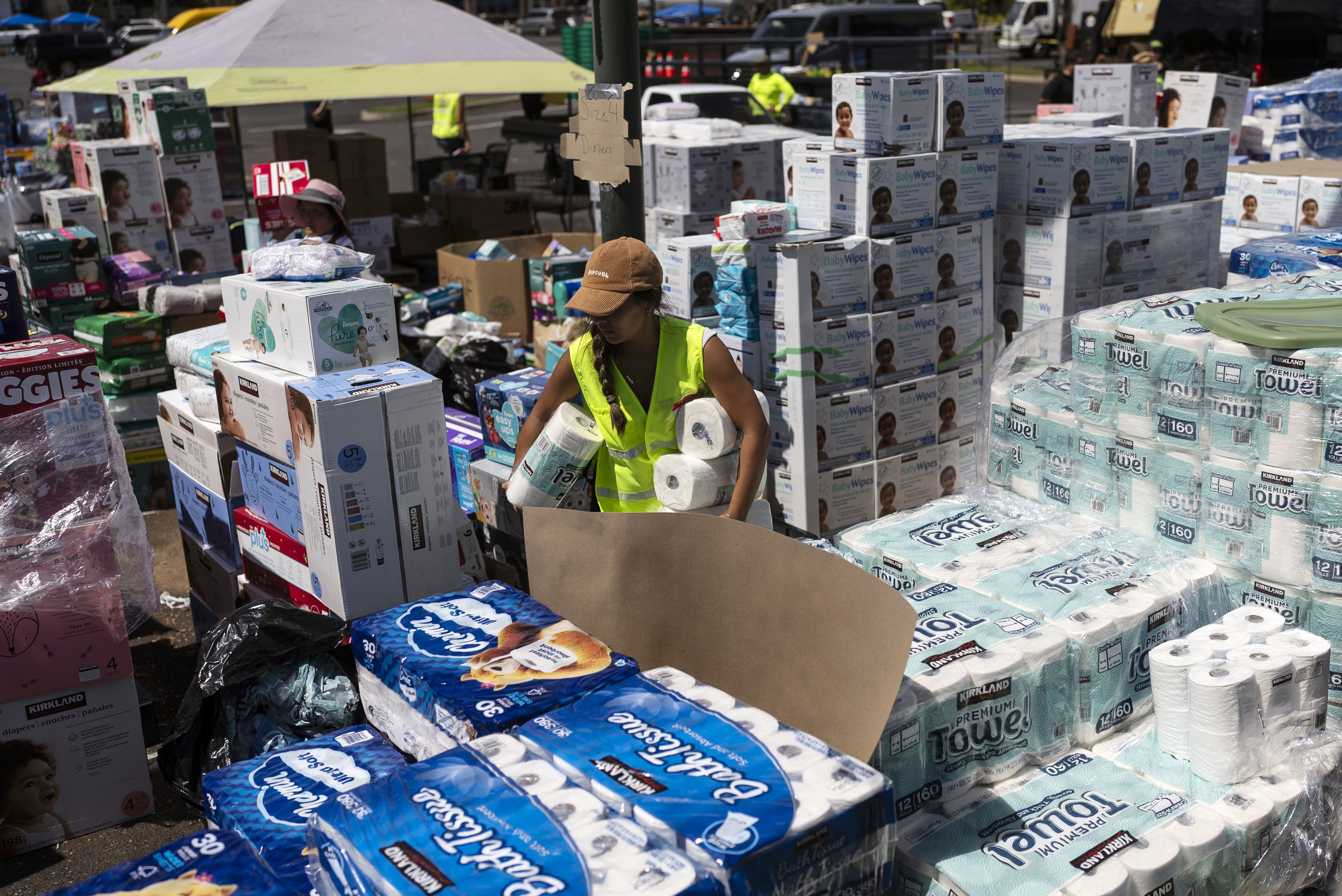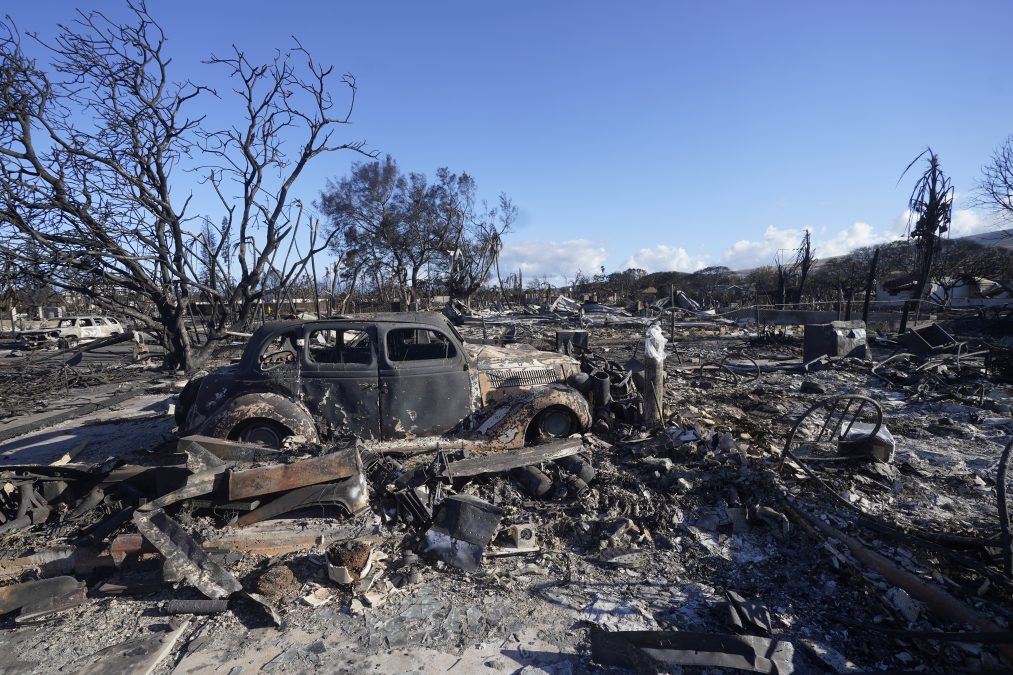Hawaii's governor warned that scores more people could be found dead following the Maui wildfires as search crews go through neighborhoods where the flames galloped as fast as a mile a minute and firefighters struggled to contain the inferno with what some officials complained was a limited water supply.
The blazes that consumed most of the historic town of Lahaina are already the deadliest in the U.S. in more than a century, with a death toll of at least 96. The cause was under investigation.
“We are prepared for many tragic stories,” Gov. Josh Green told “CBS Mornings” in a recorded interview that was aired Monday. "They will find 10 to 20 people per day, probably, until they finish. And it’s probably going to take 10 days. It’s impossible to guess, really.”
As cellphone service has slowly been restored, the number of people missing dropped to about 1,300 from over 2,000, Green said.
The Hurricane season is on. Our meteorologists are ready. Sign up for the NBC 6 Weather newsletter to get the latest forecast in your inbox.
Twenty cadaver dogs and dozens of searchers are making their way through blocks reduced to ash.
More Maui Wildfires Coverage:
“Right now, they’re going street by street, block by block between cars, and soon they’ll start to enter buildings,” Jeff Hickman, director of public affairs for the Hawaii Department of Defense, said Monday on NBC’s “Today.”
Meanwhile, some state officials say there is a shortage of water available for firefighters, and they blame a recent ruling by an environmental court judge. It’s part of a long-running battle between environmentalists and private companies over the decadeslong practice of diverting water from East Maui streams that started during Hawaii’s sugar plantation past.
Elsewhere, evacuees were expected to begin moving into hotels Monday evening. Green said Sunday that 500 hotel rooms were being made available for displaced locals, and additional 500 rooms will be set aside for workers from the Federal Emergency Management Agency who are aiding in the recovery.
In addition, FEMA has started to provide $700 to displaced residents to cover the cost of food, water, first aid and medical supplies, agency administrator Deanne Criswell said Monday. The money is in addition to whatever amount residents qualify for to cover the loss of homes and personal property.
"We’re not taking anything off the table, and we’re going to be very creative in how we use our authorities to help build communities and help people find a place to stay for the longer term,” Criswell said. More than 3,000 people have registered for federal assistance, according to FEMA, and that number was expected to grow.
On the water-supply issue, the deputy head of the U.S. Fire Administration, Tonya Hoover, said she did not have details on the island's current water supply. She said the head of her agency has been meeting with firefighters, including one who was badly hurt and hospitalized.
The Biden administration is seeking $12 billion in additional money for the government’s disaster relief fund as part of its supplemental funding request to Congress.
The blaze that swept into centuries-old Lahaina nearly a week ago destroyed nearly every building in the town of 13,000. That fire has been 85% contained, according to the county. Another blaze known as the Upcountry fire has been 60% contained, officials said.
“There’s very little left there,” Green said of Lahaina in a video update Sunday, adding that “an estimated value of $5.6 billion has gone away.”
The fires are Hawaii’s deadliest natural disaster in decades, surpassing a 1960 tsunami that killed 61 people. They also surpassed the 2018 Camp Fire in northern California that left 86 dead and destroyed the town of Paradise.
Even where the fire has retreated, authorities have warned that toxic byproducts may remain, including in drinking water, after the flames spewed poisonous fumes. And many people simply have no home to return to. Authorities plan to house them in hotels and vacation rentals.
The Red Cross said 575 evacuees were spread across five shelters on Monday, including the War Memorial Gymnasium in Wailuku. Among the visitors was Oprah Winfrey, who told Hawaii News Now that she has delivered personal hygiene products, towels and water in recent days.
Winfrey, a part-time Maui resident, warned that news crews will eventually depart from the destruction, and the world will move on. But she said that “we’re all still going to be here trying to figure out what is the best way to rebuild … I will be here for the long haul, doing what I can.”
As firefighters battled the blazes, a flurry of court actions were lodged last week over access to water. On Wednesday morning, Judge Jeffrey Crabtree issued an order temporarily suspending water caps he imposed for 48 hours. He also authorized water distribution as requested by Maui fire officials, the county or the state until further notice if the judge could not be reached.
But that wasn’t enough for attorneys with the state attorney general’s office, which later filed a petition with the state Supreme Court blaming Crabtree for a lack of water for firefighting. The state asked the Supreme Court not to let Crabtree alter the amount of water to be diverted or to put a hold on his restrictions until the petition is resolved.
Photos: Deadly Wildfires Devastate Maui's West End
The judge “substituted his judgment for that of the agency,” the petition said, referring to the Board of Land and Natural Resources. “As a result, there was not enough permitted water to the battle the wildfires."
Wayne Tanaka, executive director of Sierra Club, said Monday that the attorney general’s office exaggerated the effect of water diversion caps on firefighting.
“It’s a shameless exploitation of this horrible tragedy,” he said. “The central Maui reservoirs are of no use to west Maui, where most of the devastation is ongoing.”
He said he’s concerned the state is willing to go to these lengths to exploit the tragedy to help a private company monopolize water.
Representatives for former sugar plantation land owner Alexander & Baldwin and the East Maui Irrigation Company did not immediately respond to an email seeking comment, nor did the attorney general’s office. A spokesperson for the Board of Land and Natural Resources said they do not comment on pending litigation.
Fueled by a dry summer and strong winds from a passing hurricane, the flames on Maui raced through parched brush. One fire moved as fast as a mile every minute, according to Green.
“With those kinds of winds and 1,000-degree temperatures, ultimately all the pictures that you will see will be easy to understand,” he said.
Many gathered Sunday to mourn the dead. Maria Lanakila Church in Lahaina was spared from the flames that wiped out most of the surrounding community, but with search-and-recovery efforts ongoing, its members attended Mass up the road. The Bishop of Honolulu, the Rev. Clarence “Larry” Silva, presided.
Taufa Samisoni said his uncle, aunt, cousin and the cousin’s 7-year-old son were found dead inside a burned car. Samisoni's wife, Katalina, said the family would draw comfort from Silva's reference to the Bible story of how Jesus' disciple Peter walked on water and was saved from drowning.
“If Peter can walk on water, yes we can. We will get to the shore,” she said, her voice quivering.
J.P. Mayoga, a cook at the Westin Maui in Kaanapali, is still making breakfast, lunch and dinner on a daily basis. But instead of serving hotel guests, he’s been feeding the roughly 200 hotel employees and their family members who have been living there since Tuesday.
His home and that of his father were spared. But his girlfriend, two young daughters, father and another local are all staying in a hotel room together, as it is safer than Lahaina, which is covered in toxic debris.
“Everybody has their story, and everybody lost something. So everybody can be there for each other, and they understand what’s going on in each other’s lives,” he said of his co-workers at the hotel.
Weber reported from Los Angeles. Associated Press journalists Haven Daley in Kalapua, Hawaii; Ty O’Neil in Lahaina, Hawaii; Bobby Caina Calvan and Beatrice Dupuy in New York; Sara Cline in Baton Rouge, Louisiana; and Pat Eaton-Robb in Hartford, Connecticut, contributed to this report.



